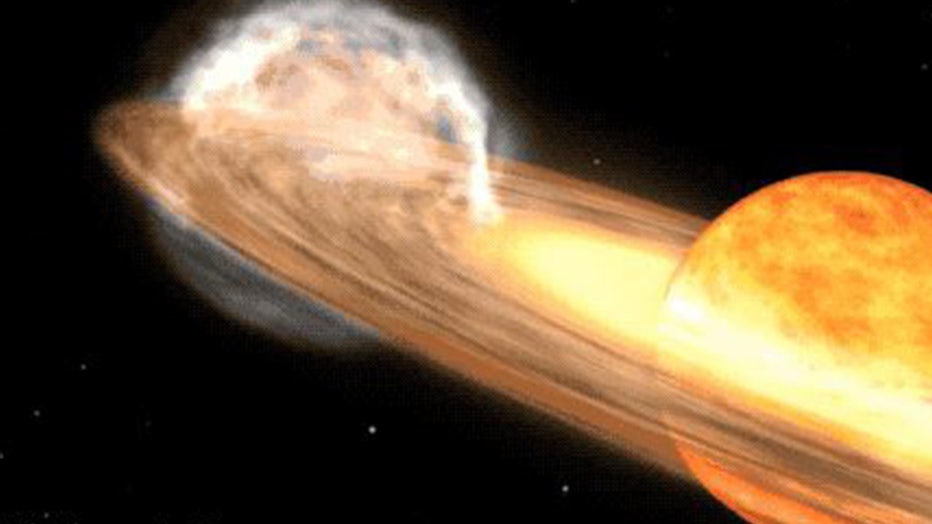Rare star explosion could be ‘once-in-a-lifetime viewing opportunity’

Fireball smashes into atmosphere during Orionids meteor shower in Nova Scotia
A camera captured a meteor glowing brightly before it slammed into the Earth?s atmosphere. (Credit: Brenda Tate & Tim Doucette via Storyful)
A "new star" system, located 3,000 light-years away from Earth, is predicted to become visible to the unaided eye soon.
According to NASA, the event could be a "once-in-a-lifetime viewing opportunity" as the nova explosion only occurs about every 80 years.
The nova, T Coronae Borealis, last exploded in 1946 and astronomers believe it will do so again between February and September 2024.
This recurring nova is only one of five in our galaxy. This happens because it is a binary system with a white dwarf and red giant. The stars are close enough that as the red giant becomes unstable and begins ejecting its outer layers, the white dwarf collects that matter onto its surface. The shallow dense atmosphere of the white dwarf eventually heats enough to cause a "runaway thermonuclear reaction" which produces the nova we see from Earth, according to NASA.

A red giant star and white dwarf orbit each other in this image of a nova. (Credit: NASA’s Goddard Space Flight Center)
In contrast to a supernova, which is the explosive death of a massive star, a nova refers to the sudden, brief explosion from a collapsed star known as a white dwarf.
How can I see nova star event?
The star system, which normally has a magnitude +10, which is far too dim to see with the unaided eye, will jump to magnitude +2 during the event. This will be of similar brightness to the North Star, Polaris.
RELATED: NASA's Webb Telescope captures rarely seen star on cusp of death
Once its brightness peaks, it should be visible to the unaided eye for several days and just over a week with binoculars before it dims again, possibly for another 80 years.
As stargazers wait for the nova, NASA suggests becoming familiar with the constellation Corona Borealis, or the Northern Crown — a small, semicircular arc near Bootes and Hercules. This is where the outburst will appear as a "new" bright star.
This story was reported from Los Angeles.

